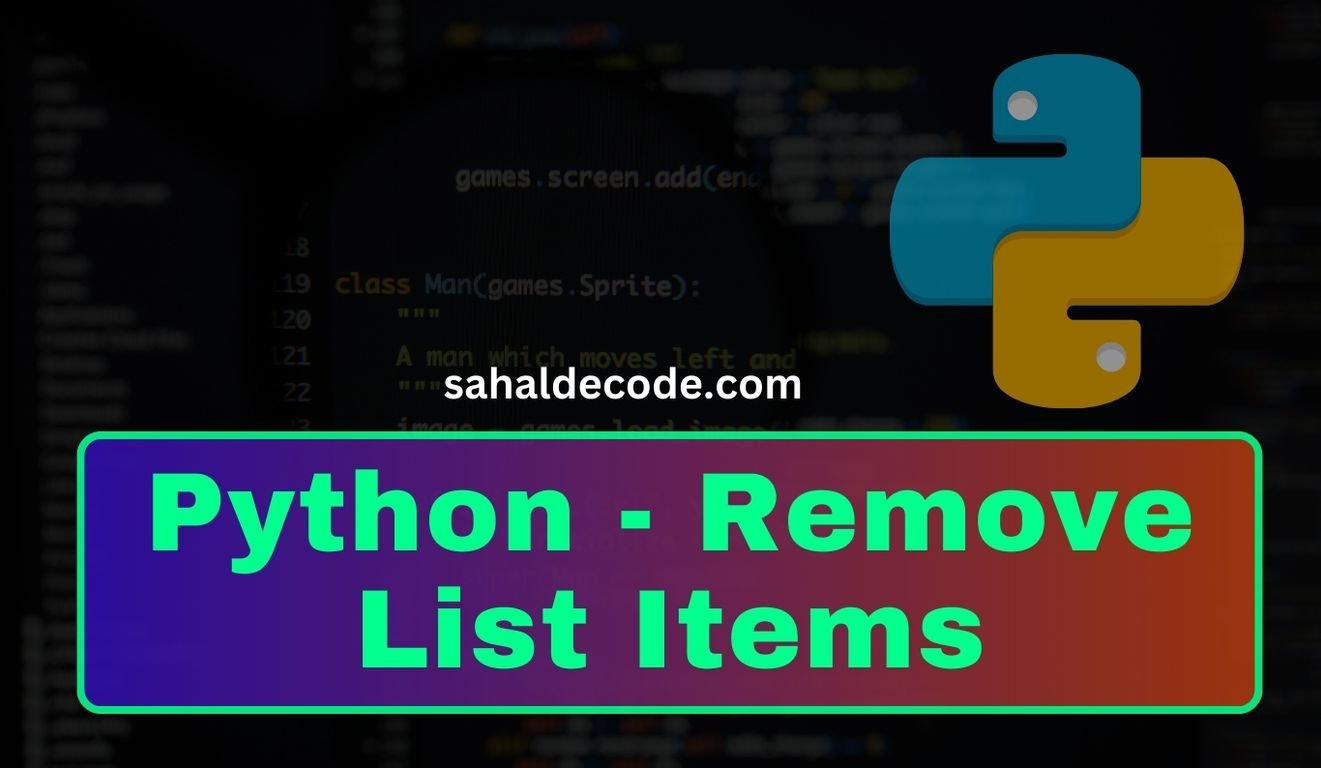Are you ready to delve into the world of list manipulation in Python? Learning how to remove list items is a vital skill for every programmer. Whether you’re a coding novice or an experienced developer, understanding different techniques for removing list elements can significantly enhance your programming prowess. In this comprehensive guide, we’ll explore various methods to remove items from Python lists, complete with examples and practical insights.
Why Removing List Items Matters
Before we dive into the methods of removing items from lists, let’s highlight the importance of this skill. Lists are a fundamental data structure in Python, serving as repositories for collections of items. By mastering the art of removing items, you gain the ability to modify data, maintain accurate records, and optimize your programs for efficiency.
Using the remove() Method
The simplest way to remove an item from a list is by using the remove() method. This method allows you to specify the value of the item you want to remove. It finds the first occurrence of the specified value and eliminates it from the list. Here’s how it works:
fruits = ["apple", "banana", "orange", "banana", "grape"]
fruits.remove("banana")
# Removing the first occurrence of "banana"Deleting Items by Index with the del Statement
To remove an item from a specific index in the list, you can use the del statement. This statement directly removes the item at the given index. It’s important to note that using del doesn’t return the removed item; it only alters the list. For example:
numbers = [1, 2, 3, 4, 5]
del numbers[2]
# Removing the item at index 2 (value 3)Removing Items by Value with the pop() Method
The pop() method serves a dual purpose – it removes an item by its index while also returning the removed item’s value. If no index is provided, it removes and returns the last item in the list. Here’s an example:
characters = ["Alice", "Bob", "Charlie", "David"]
removed_character = characters.pop(1)
# Removing "Bob" from index 1Practical Examples Remove List Items
Example 1: Using remove() to Delete Items
tasks = ["study", "exercise", "read"]
tasks.remove("exercise")
# Removing "exercise" from the list
Example 2: Removing Items Using del by Index
colors = ["red", "green", "blue", "yellow"]
del colors[2]
# Removing "blue" from index 2FAQs About Removing List Items
What happens if I try to remove an item that doesn’t exist in the list?
Python will raise an ValueError indication that the item is not on the list.
Can I use the remove() method to remove all occurrences of a specific value?
No, the remove() method only removes the first occurrence of the specified value
Is there a way to remove items by their value using the pop() method?
The pop() method primarily removes items by their index, not value.
Conclusion
Removing items from Python lists is an essential skill that empowers you to manage data effectively and optimize your programs. By mastering techniques like remove(), del, and pop(), you gain the tools to modify lists, maintain accurate records, and create more efficient programs.
As you continue on your coding journey, remember that practice is key. Experiment with various methods and scenarios to solidify your understanding. Lists are integral to many programs, and your newfound skills will undoubtedly serve you well in tackling diverse programming challenges.










